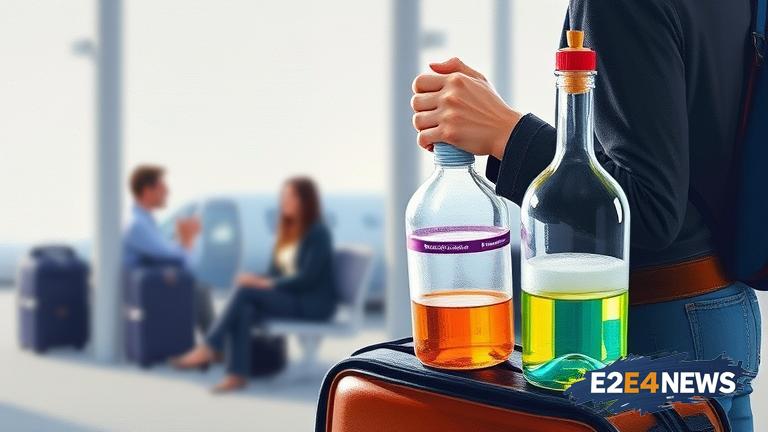In a recent statement, South Dakota Governor Kristi Noem proposed the idea of relaxing the Transportation Security Administration’s (TSA) liquid carry-on limits. The current restrictions, which have been in place since 2006, prohibit passengers from carrying liquids, gels, and aerosols in containers larger than 3.4 ounces in their carry-on bags. Noem argues that with the advancements in security technology, it may be time to reconsider these limits. She believes that easing the restrictions could make air travel more convenient for passengers, while also promoting economic growth. The TSA has been testing new security scanners that can detect explosives and other threats in liquids, which could potentially allow for the relaxation of the limits. However, the agency has not yet made any official announcements regarding changes to the policy. The current limits were put in place in response to a thwarted terrorist plot to detonate liquid explosives on a plane. Since then, the TSA has implemented various security measures to prevent similar threats, including the use of X-ray machines and explosives detection systems. Despite these measures, the liquid carry-on limits have remained in place, causing frustration for many passengers who feel that they are unnecessary. Noem’s proposal has sparked debate among aviation experts and security officials, with some arguing that relaxing the limits could compromise security, while others believe that it could be done safely with the right technology and protocols in place. The TSA has said that it is constantly reviewing and updating its security protocols to ensure the safety of passengers, but it has not indicated whether it plans to ease the liquid carry-on limits. If the limits were to be relaxed, it could have significant implications for the aviation industry, including increased passenger convenience and potential economic benefits. However, it would also require careful consideration of the potential security risks and the implementation of effective measures to mitigate them. The use of advanced security scanners and other technologies could play a key role in ensuring the safety of passengers if the limits are eased. Ultimately, any changes to the liquid carry-on limits would need to be carefully evaluated and implemented in a way that prioritizes passenger safety and security. The proposal has also raised questions about the role of technology in enhancing airport security and the potential for other security measures to be relaxed or modified in the future. As the debate continues, it is clear that the issue of liquid carry-on limits is complex and multifaceted, requiring careful consideration of competing priorities and interests. The TSA’s approach to security is constantly evolving, and it will be important to monitor developments in this area to see how the agency responds to Noem’s proposal and other calls for changes to its security protocols.
